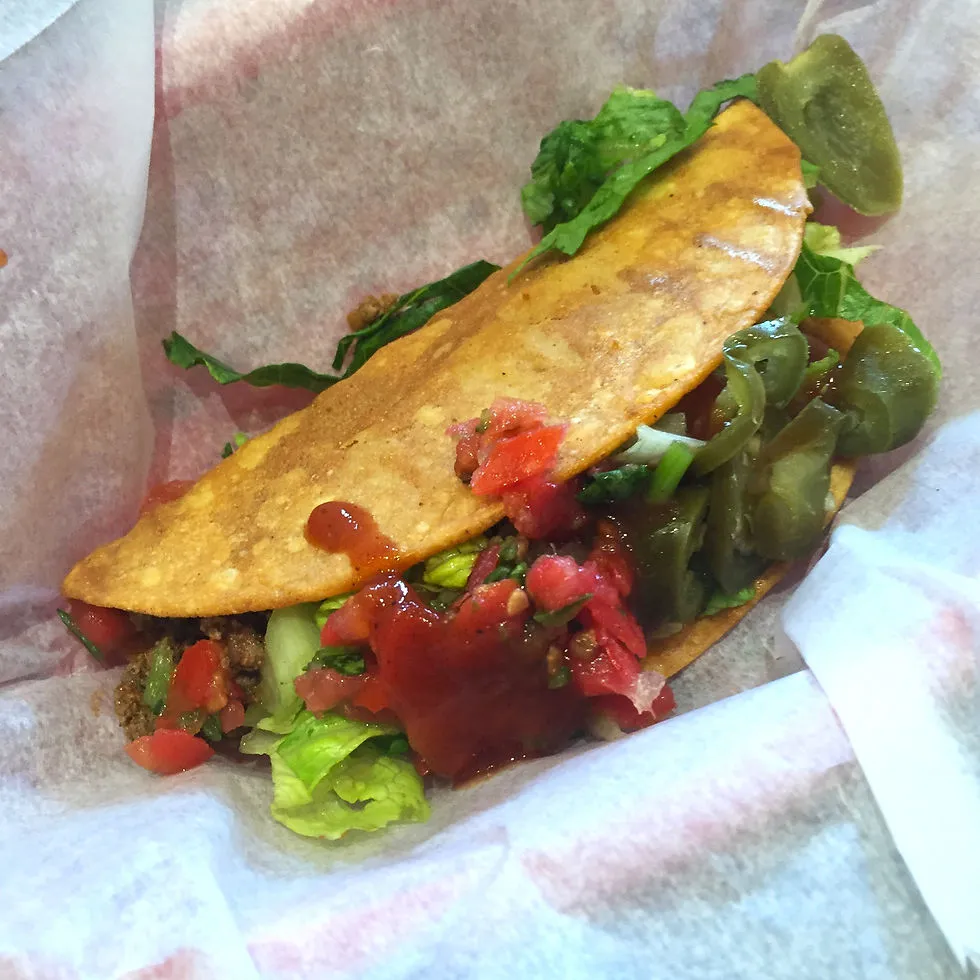A Chicagoan's Guide to Dried Chiles: Ancho, Guajillo & Beyond
Master the art of authentic Mexican cooking with this comprehensive guide to dried chiles. Learn where to buy, how to select, and budget-friendly techniques for transforming these powerhouse ingredients into incredible salsas, moles, and sauces.


A Chicagoan's Guide to Dried Chiles: Ancho, Guajillo & Beyond
Chicago's vibrant Mexican community has gifted us with incredible access to authentic ingredients, including the dried chiles that form the backbone of traditional Mexican cuisine. Whether you're shopping in Little Village, Pilsen, or your neighborhood Jewel-Osco, understanding dried chiles can transform your home cooking while keeping your budget in check.
The Holy Trinity: Ancho, Guajillo & Pasilla
Ancho Chiles: The Sweet Foundation
Flavor Profile: Sweet, fruity, and mild with notes of chocolate and tobacco Heat Level: 1,000-1,500 Scoville units (mild) Best Uses: Mole, barbacoa, enchilada sauce
Ancho chiles are dried poblano peppers and serve as the sweet backbone of countless Mexican dishes. At Jewel-Osco, you'll find them in the international aisle for around $2.99 per 4 oz package, while Mexican markets in Little Village often sell them for $1.50-2.00 per pound when bought in bulk.
Guajillo Chiles: The Workhorse
Flavor Profile: Mild heat with fruity, tangy notes and hints of berry Heat Level: 2,500-5,000 Scoville units (mild to moderate) Best Uses: Pozole, birria, enchilada sauce, everyday salsas
Guajillo chiles are the most versatile dried chile in Mexican cooking. Their beautiful red color and balanced flavor make them perfect for beginners. Pro tip: buy these in larger quantities during Mexican Independence Day sales at Jewel-Osco – they often go 30% off in September.
Pasilla Chiles: The Complex Character
Flavor Profile: Rich, complex, earthy with chocolate undertones Heat Level: 1,000-2,500 Scoville units (mild) Best Uses: Mole negro, dark sauces, chile rellenos
Also called "chile negro," pasilla chiles add depth and complexity to dishes. They're essential for authentic mole preparations and pair beautifully with ancho chiles.
Beyond the Big Three: Expanding Your Chile Repertoire
Chile de Árbol: The Fire Starter
Heat Level: 15,000-30,000 Scoville units (hot) Best Uses: Salsa taquera, hot sauce, adding heat to mild chile blends
A little goes a long way with these fiery red chiles. One $1.50 package can last months when used sparingly to add heat to your sauces.
Chipotle: Smoky Sophistication
Flavor Profile: Intensely smoky with moderate heat Heat Level: 2,500-8,000 Scoville units (moderate) Best Uses: Adobo sauce, marinades, barbacoa
Chipotle chiles are smoked jalapeños. While pricier than other varieties, their intense flavor means you need very few to transform a dish.
New Mexico Chiles: Midwest-Friendly Heat
Flavor Profile: Earthy, mild, slightly sweet Heat Level: 1,000-8,000 Scoville units (varies by type) Best Uses: Chile colorado, stews, American Southwest dishes
These are increasingly available at Jewel-Osco locations and offer a gateway for those new to dried chile cooking.
Shopping Strategy: Jewel-Osco vs. Mexican Markets
Jewel-Osco Advantages:
- Quality Control: Consistent freshness and packaging
- Convenience: One-stop shopping with your regular groceries
- Sales Cycles: Regular promotions during Hispanic Heritage Month
- Variety: Growing selection in most Chicago-area locations
- Chrome Extension Savings: Use our Jewel-Osco Coupon Clipper for additional discounts on international products
Best Jewel-Osco Locations for Dried Chiles:
- Pilsen/Little Village stores (most extensive selection)
- Argyle Street location (good variety, serves Asian community too)
- North Side locations in diverse neighborhoods
Mexican Market Advantages:
- Price: Often 40-60% cheaper when buying in bulk
- Authenticity: Wider variety including regional specialties
- Cultural Connection: Staff expertise and recipe recommendations
- Freshness: Higher turnover in specialized markets
Top Mexican Markets for Chiles:
- Little Village: Multiple mercados along 26th Street
- Pilsen: Traditional markets with competitive prices
- Gage Park: Excellent selection and value
Budget-Smart Shopping Tips
Seasonal Strategy
- September-October: Mexican Independence Day and Día de los Muertos drive sales
- December: Holiday cooking season means better variety
- February-March: Post-holiday clearances on specialty items
Bulk Buying Guidelines
- Ancho & Guajillo: Buy 1-2 pounds if stored properly
- Pasilla: 8 oz packages sufficient for most home cooks
- Chile de Árbol: 2-4 oz packages last months
- Storage: Airtight containers in cool, dark places (last 1-2 years)
Cost Comparison Chart:
- Jewel-Osco packages: $2.99-4.99 for 3-4 oz
- Mexican markets (bulk): $2.00-4.00 per pound
- Online specialty: $8.00-12.00 per pound (avoid unless desperate)
Selection & Storage: Getting the Best Value
What to Look For:
- Flexibility: Dried chiles should bend without cracking
- Color: Vibrant, deep colors (avoid faded or dusty-looking chiles)
- Aroma: Rich, fruity smell when opened
- No White Spots: Avoid any signs of mold or pest damage
Proper Storage:
- Short-term: Original packaging in pantry (3-6 months)
- Long-term: Vacuum-sealed bags in freezer (2+ years)
- Active cooking: Small amounts in airtight jars near stove
Essential Techniques: From Pod to Sauce
Basic Preparation Method:
- Remove stems and seeds (save seeds for extra heat if desired)
- Toast lightly in dry skillet for 30-60 seconds
- Soak in hot water for 20-30 minutes until pliable
- Blend with soaking liquid until smooth
- Strain for silky texture (optional)
Flavor Enhancement Tips:
- Toast first: Always toast chiles before soaking for deeper flavor
- Combine varieties: Mix mild and hot chiles for complex heat
- Add aromatics: Garlic, onion, and tomato complement chile flavors
- Season wisely: Salt, cumin, and Mexican oregano enhance natural flavors
Budget-Friendly Recipe: Basic Red Enchilada Sauce
Cost: Under $3.00, serves 6-8
Ingredients:
- 6 guajillo chiles ($0.50)
- 2 ancho chiles ($0.30)
- 1 Roma tomato ($0.25)
- 2 garlic cloves ($0.10)
- 1/2 white onion ($0.25)
- Salt, cumin, oregano ($0.25)
- 2 cups chicken broth ($0.50)
Method:
- Toast chiles in dry pan until fragrant
- Soak in hot broth for 20 minutes
- Char tomato, onion, and garlic
- Blend everything until smooth
- Strain and simmer 15 minutes
- Season to taste
This base sauce works for enchiladas, chilaquiles, or as a braising liquid for meats.
Cultural Significance & Tradition
The Mexican Kitchen Foundation
Dried chiles represent thousands of years of culinary evolution. Each variety tells a story of specific regions, cooking methods, and family traditions. When you master these ingredients, you're connecting with a rich cultural heritage while creating authentic flavors at home.
Community Connection
Many Chicago Mexican families maintain traditions of communal chile preparation – buying in bulk, sharing varieties, and teaching preparation techniques. Consider joining community cooking groups or cultural festivals to learn from experienced cooks.
Advanced Applications: Mole & Beyond
Simple Mole Colorado (Serves 8-10, Under $12)
- 5 ancho chiles
- 3 guajillo chiles
- 2 pasilla chiles
- 1 chipotle chile
- Sesame seeds, pumpkin seeds
- Plantain, onion, garlic
- Dark chocolate
- Chicken broth
This simplified mole takes 2 hours but costs a fraction of restaurant prices and serves as an excellent introduction to complex sauce-making.
Chile-Based Marinades
Transform cheap cuts of meat with chile marinades:
- Carnitas: Guajillo and orange
- Barbacoa: Ancho, chipotle, and bay leaves
- Pollo Adobado: Guajillo, garlic, and vinegar
Health Benefits & Nutrition
Nutritional Powerhouses:
- Vitamin C: More than fresh citrus
- Capsaicin: Anti-inflammatory properties
- Antioxidants: Fight free radicals
- Iron & Potassium: Essential minerals
- Low Calories: Flavor without fat
Digestive Benefits:
Contrary to popular belief, properly prepared chiles aid digestion and can help with weight management through increased metabolism.
Special Occasions & Holiday Cooking
Mexican Independence Day (September 16)
Stock up during sales for traditional pozole, chile en nogada, and celebratory sauces. Many families prepare large batches for community celebrations.
Día de los Muertos (November 1-2)
Traditional mole preparations honor ancestors. This is when you'll find the best selection and prices on specialty chiles.
Christmas Tamale Season
December is prime time for chile-based masa preparations. Plan ahead and buy chiles in November for best selection.
Common Mistakes & How to Avoid Them
Over-Toasting
Burnt chiles taste bitter and ruin entire sauces. Toast just until fragrant and pliable.
Under-Soaking
Hard chiles won't blend properly. Ensure chiles are completely soft before blending.
Wrong Chile Combinations
Some chiles overpower others. Start with single varieties before creating blends.
Storage Failures
Improperly stored chiles lose flavor quickly. Invest in proper storage containers.
Building Your Chile Pantry on a Budget
Starter Kit ($15-20):
- 1 lb mixed ancho/guajillo from Mexican market
- 1 small package chile de árbol
- Basic spices (cumin, oregano, garlic powder)
Intermediate Collection ($35-45):
- Add pasilla, chipotle, New Mexico varieties
- Whole spices for toasting
- Quality blender or food processor
Advanced Arsenal ($60-80):
- Regional specialties (mulato, cascabel, puya)
- Specialized equipment (comal, molcajete)
- Premium ingredients for complex moles
Maximizing Your Savings with Digital Tools
The Jewel-Osco Coupon Clipper Chrome extension specifically tracks international product sales and can alert you to chile deals. During our testing, users saved an average of 25% on international ingredients by timing purchases with digital coupons and store promotions.
Many Mexican markets don't offer digital coupons, but they do provide bulk discounts and loyalty programs. Ask about case discounts if you're buying multiple pounds.
Seasonal Cooking Calendar
Spring: Light Salsas & Marinades
Focus on fresh, bright flavors with guajillo and New Mexico chiles
Summer: Grilling & Cold Preparations
Chipotle marinades and international grilling applications
Fall: Comfort Foods & Stews
Rich moles and braised dishes using the full chile spectrum
Winter: Holiday Traditions
Traditional celebrations requiring complex sauce preparations
Connecting with Chicago's Mexican Community
Learning Opportunities:
- Pilsen cooking classes: Community centers offer traditional techniques
- Cultural festivals: Taste authentic preparations
- Market relationships: Build connections with knowledgeable vendors
- Family exchanges: Many families welcome curious cooks
Recipe Sharing:
The best chile knowledge comes from experienced cooks willing to share family techniques. Approach with respect and genuine interest in learning.
Troubleshooting Common Issues
Sauce Too Thin:
Simmer longer or add toasted bread/tortilla for thickening
Too Spicy:
Add dairy, sugar, or more mild chiles to balance heat
Bitter Flavor:
Likely from over-toasted chiles; start over with fresh ingredients
No Heat:
Seeds carry much of the heat; include some seeds or add chile de árbol
Beyond Mexican: Global Chile Applications
Korean-Mexican Fusion
Combine gochugaru with guajillo for unique fusion sauces
Italian Applications
Dried chiles work beautifully in arrabiata and other spicy Italian sauces
Indian Crossover
Mexican chiles can substitute for hard-to-find Indian varieties
American BBQ
Chipotle and ancho chiles elevate traditional American barbecue
Final Thoughts: Your Chile Journey
Mastering dried chiles opens a world of authentic flavors while keeping food costs reasonable. Start with the basic trinity of ancho, guajillo, and pasilla, then expand your repertoire as your confidence grows.
Chicago's Mexican markets offer incredible value and cultural connection, while Jewel-Osco provides convenience and quality control. Use both strategically to build an impressive chile pantry without breaking your budget.
Remember: the Jewel-Osco Coupon Clipper can help you save significantly on international ingredients, making authentic Mexican cooking more affordable than ever. Combined with smart shopping at ethnic markets and proper storage techniques, you can enjoy restaurant-quality flavors at home for a fraction of the cost.
Pro Tip: Start a chile journal noting your favorite combinations, sources, and seasonal price patterns. Within a year, you'll have a personalized guide to Chicago's best chile shopping and your family's preferred flavor profiles.
Whether you're preparing a simple weeknight dinner or planning an elaborate quinceañera celebration, dried chiles provide the authentic foundation that transforms good food into unforgettable experiences.